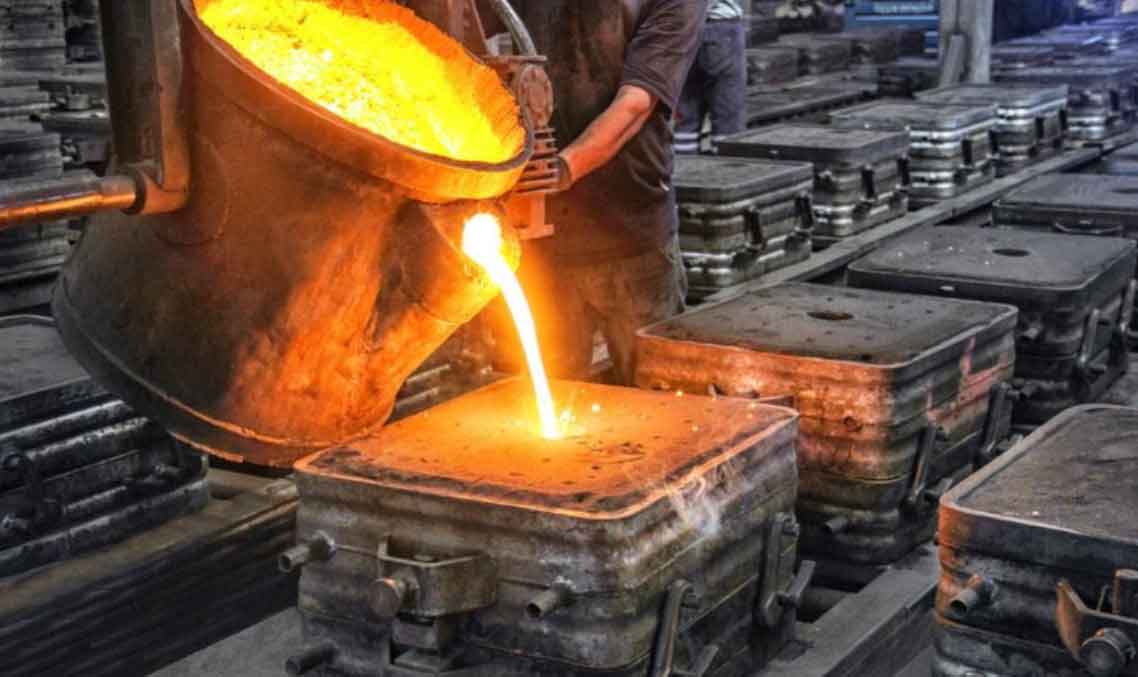
Sand casting process offers design freedom and empowers creativity in the manufacturing of intricate and unique components. Here’s how sand casting provides design flexibility and unleashes creativity:
- Complex Geometries: Sand casting allows for the production of parts with intricate shapes, such as curves, undercuts, and thin walls, which may be challenging or costly to achieve with other manufacturing processes. Designers can explore innovative and organic shapes that cater to specific functionality or aesthetic requirements.
- Prototype Development: Sand casting is well-suited for rapid prototyping, enabling designers to quickly iterate and test different designs before committing to mass production. This iterative approach fosters creativity and enables the refinement of component designs for optimal performance and appearance.
- Multiple Materials: Sand casting supports a wide range of materials, including various metals and alloys. Designers can select the most appropriate material based on mechanical properties, thermal conductivity, and other functional requirements, allowing for customization and design optimization.
- Customization and Personalization: Sand casting allows for customization and personalization of components to meet specific customer needs or market demands. Designers can tailor the design of parts to match individual preferences, making products more appealing to consumers.
- Innovative Applications: Sand casting encourages designers to explore novel applications and functionalities of components. With the ability to produce complex shapes and intricate details, designers can push the boundaries of traditional applications and discover new ways to use sand-casted parts.
- Versatility: Sand casting is applicable to various industries, including automotive, aerospace, industrial equipment, and art. This versatility enables designers to transfer knowledge and insights gained from one industry to another, leading to cross-disciplinary creativity and innovation.
- Integration of Features: Sand casting allows for the integration of multiple features into a single component, reducing assembly requirements and potential points of failure. Designers can create parts with built-in threads, bosses, and flanges, eliminating the need for additional machining or assembly steps.
- Sustainability Considerations: Sand casting offers the opportunity to incorporate sustainable design principles by using recyclable materials and reducing waste. Designers can explore eco-friendly materials and optimize component designs for better resource utilization.
- Artistic Expression: In addition to industrial applications, sand casting serves the artistic community by enabling the creation of intricate metal sculptures and art pieces. Designers can transform their artistic visions into tangible metal structures through sand casting.
- Innovative Pattern Making: With advancements in digital technologies, designers can employ 3D printing and computer-aided design (CAD) software to create intricate patterns for sand molds. This opens up new possibilities for intricate designs and facilitates the translation of creative ideas into physical forms.
By providing a canvas for design exploration and ingenuity, the sand casting process empowers designers to push the boundaries of what is possible, leading to innovative solutions, enhanced product performance, and unique artistic expressions. The ability to achieve design freedom in sand casting makes it a compelling choice for manufacturers and designers alike.
